- 글번호
- 207994
- 작성일
- 2025.04.23
- 수정일
- 2025.04.23
- 작성자
- 박물관
- 조회수
- 7
Recording the History of Fiber Art
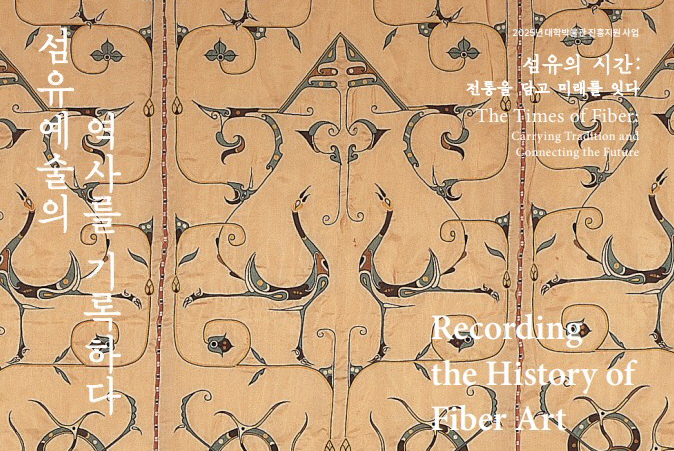
The Times of Fiber: Carrying Tradition and Connecting the Future
Ⅰ.Recording the History of Fiber Art
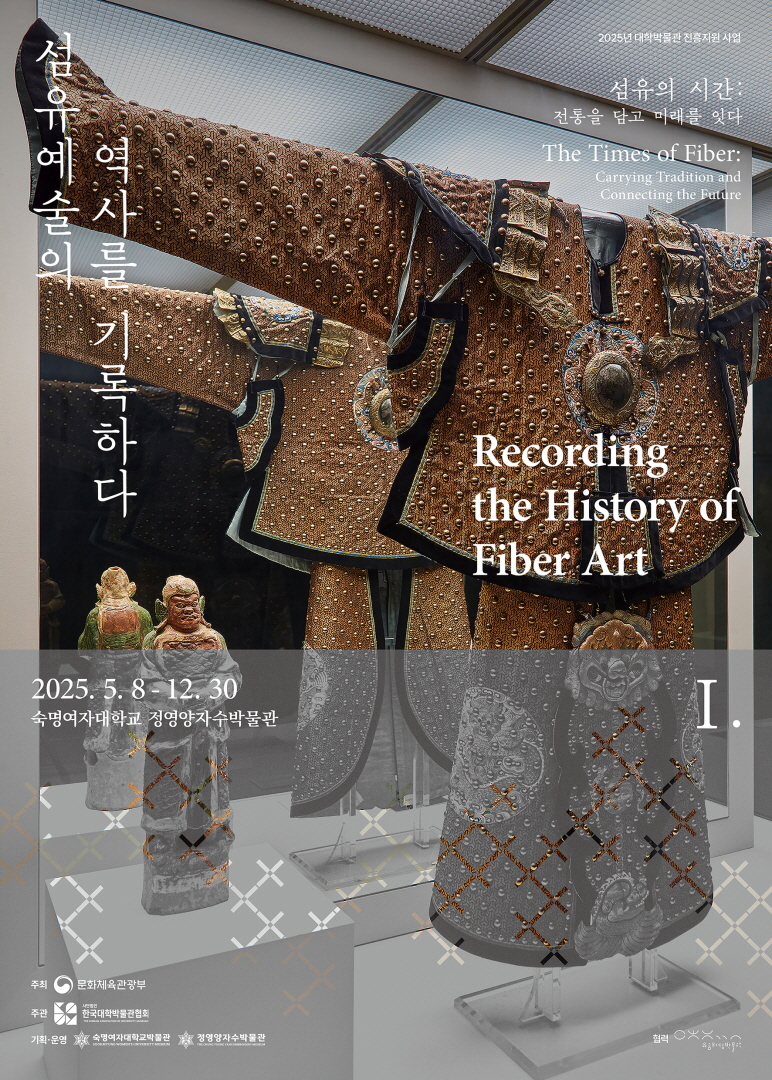
Sookmyung Womens University Museum, Chung Young Yang Embroidery Museum, and MOONSHIN Museum has come together to hold an exhibition about the past, present, and future of fiber art. The special exhibition《The Times of Fiber: Carrying Tradition and Connecting the Future》was held by SUM, which was chosen for the ‘2025 University Museum Promotion & Support Project’ hosted by the Ministry of Culture, Sports and Tourism and organized by the Korean Association of University Museums. This exhibition aims to reflect on the sustainability of fiber art and seek for its future through artifacts that carry the history of fiber, modern and contemporary embroidery works, as well as contemporary works created from waste.
The first part of the exhibition, ‘Recording the History of Fiber Art’ presents the history of East Asian fiber art beginning with traces discovered before the common era up to the pre-modern period. It also highlights the tradition of fiber art through ceremonial costumes including religious attire, wedding garments and official uniforms.
East Asian fiber art from Korea, China, and Japan reflect regional colors and communion as culture was mainly transmitted through fiber art.
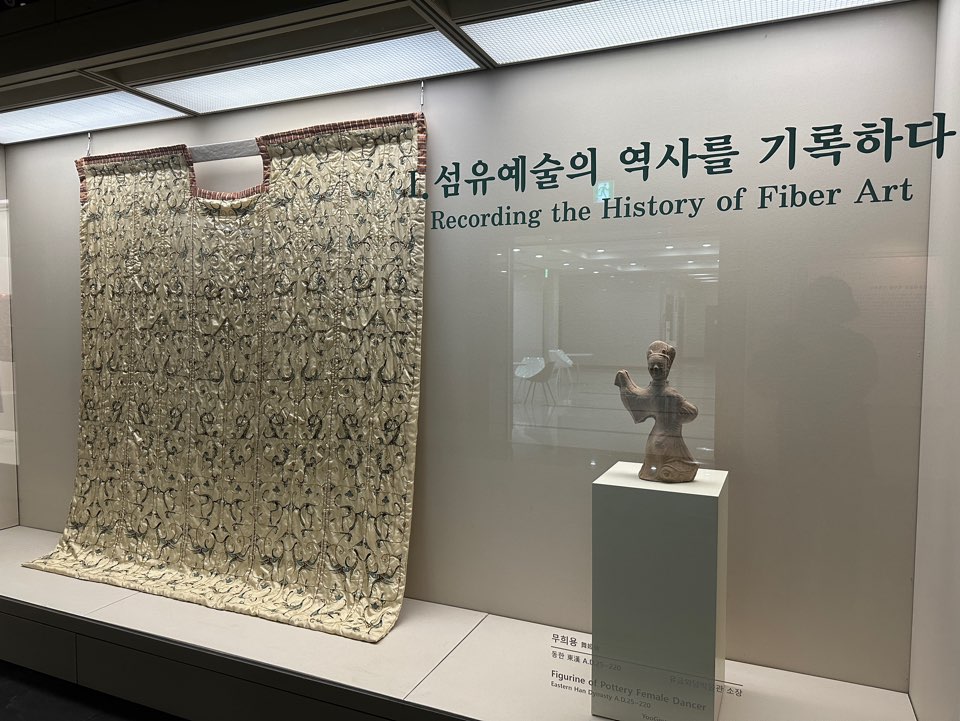
The History of Fiber Art
In East Asia, fiber has played a significant role in diplomacy and was also utilized as currency. Moreover, it was also used to assess a person’s wealth, rank and social status, especially, embroidery designs on luxurious silk did not simply decorate garments, but showed the desires of the wearer and symbolized the wearer’s socio-economic status. Embroidery design may have changed with time and the development of civilization, it has established itself as a key form of expression that reflect the spiritual ideals and social classes of mankind.
Embroidery designs used in ancient East Asia seems to have been inspired by hunting, shamanistic symbolism and incantation ceremonies. This infers how the faith towards nature and supernatural existence in early society strongly influenced the designs. These traditional patterns have become more refined over time, and developed into silk embroidery, which represented both a secular and supernatural authority during the dynastic period. During this time the boundaries of fiber art expanded beyond daily household items to areas of artistic value and social meaning as elaborate handicraft techniques were used to convey political, religious, and cultural messages for the royal family and aristocratic class.
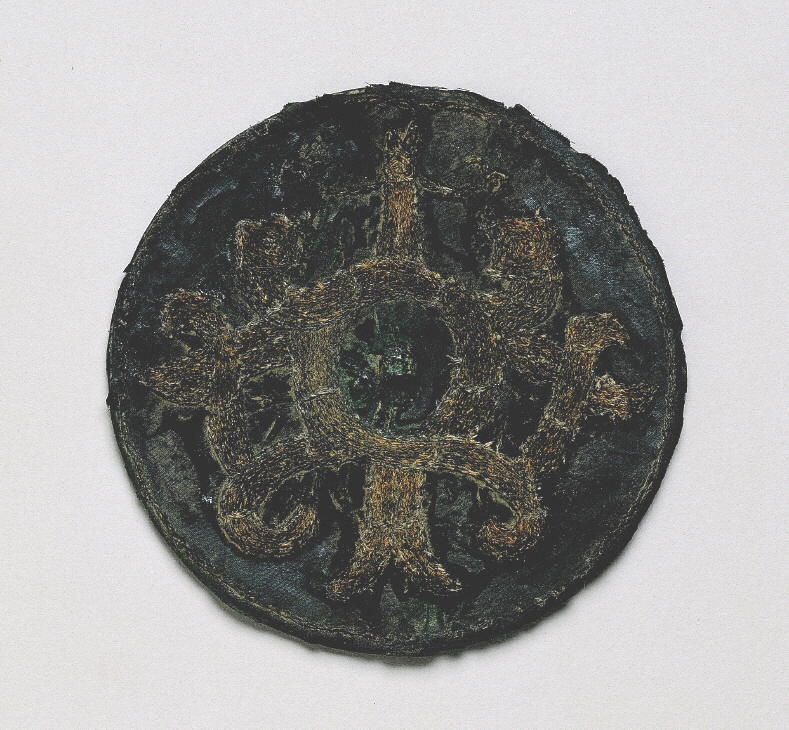
Bronze Mirror with Remains of Embroidered Silk Cover, Chinese Warring States period
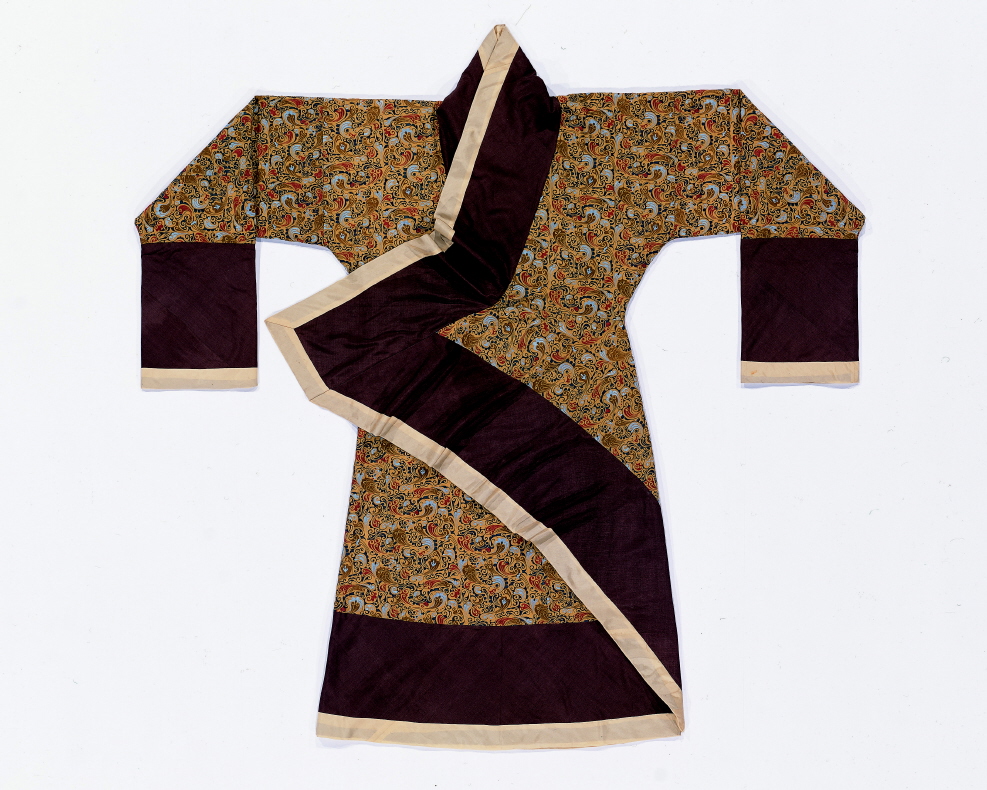
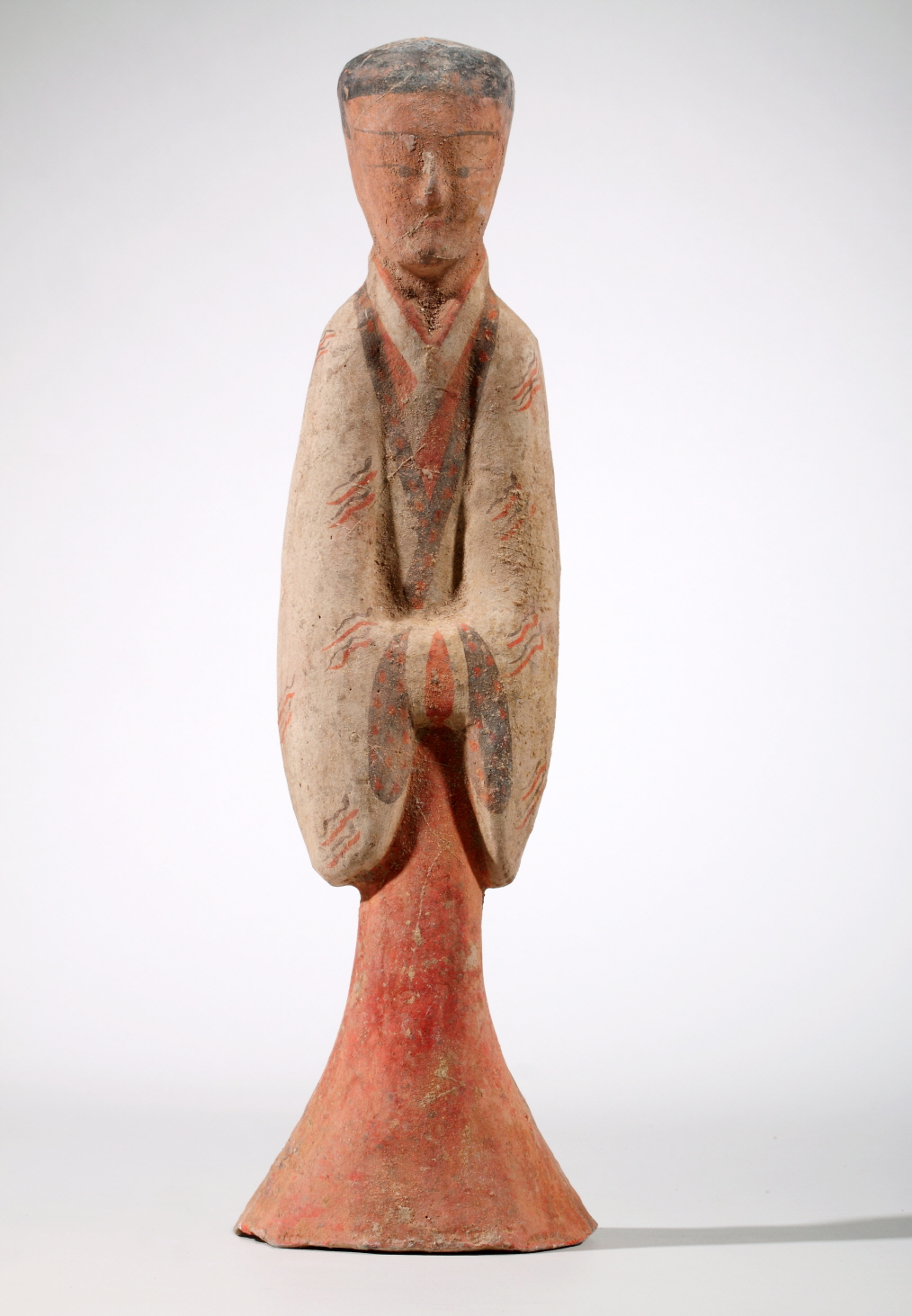
Woman’s Robe, Chinese 2nd century BCE (Replica) Figurine of Painted Pottery Female,
Chinese Western Han Dynasty,
YooGeum Museum Collection
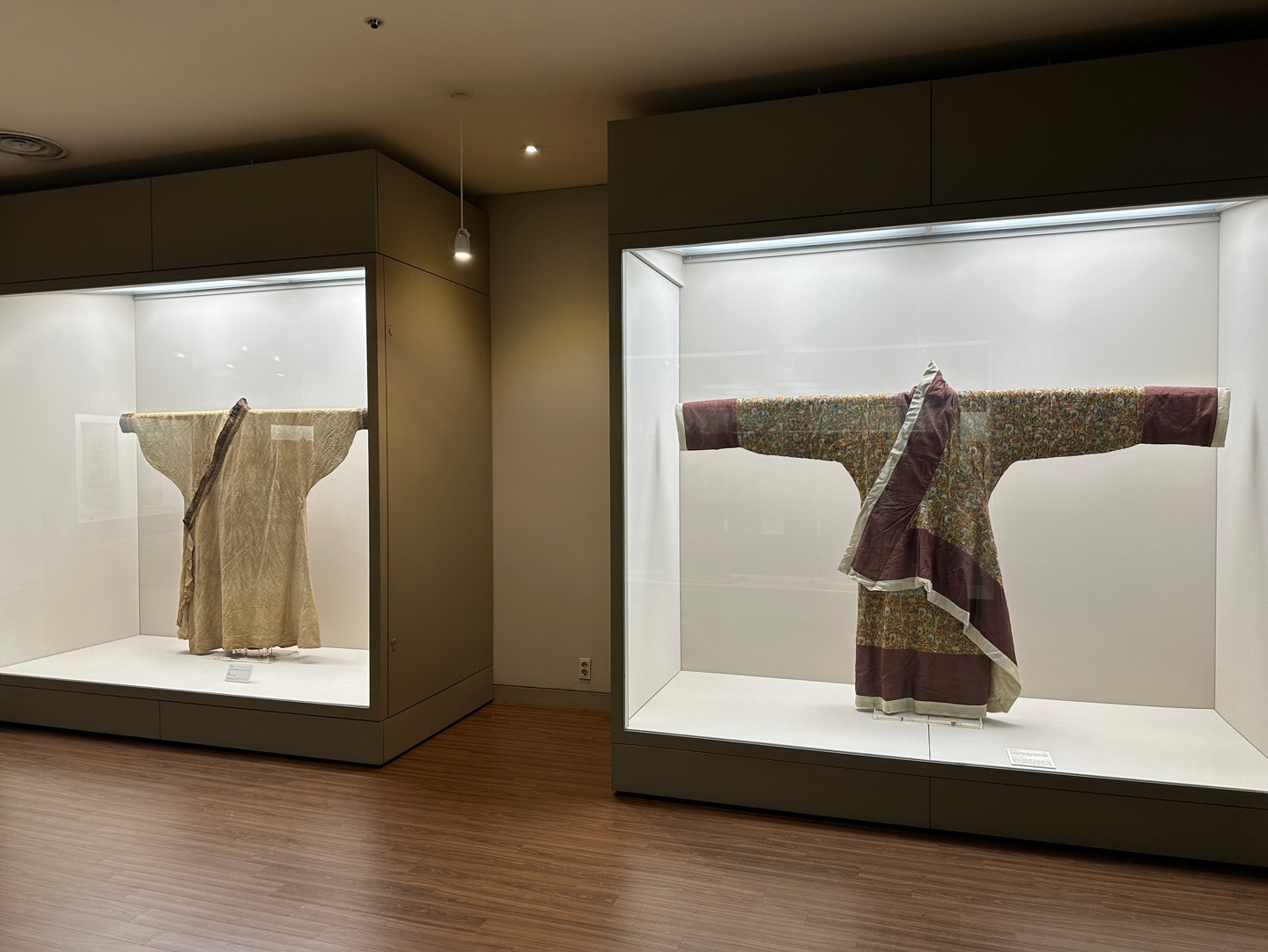
East Asian Ceremonial Costumes
The visual image found in ancient costumes of East Asia is not only considered as an aesthetic element, but have become a significant medium in connecting the mind and the material world. The symbols that are incorporated in costumes go beyond decorating and serve as visual representations that are important in forming and communicating the existence of an individual in this universe. For example, design patterns such as dragon(龍), phoenix(鳳凰), and clouds(雲) symbolize the authority of the royal family and aristocrats, whereas the design of Chinese characters, longevity(長壽), fortune(福), and auspiciousness(吉祥) convey personal desires for happiness and peace.
Especially, various design patterns that convey these meanings can be found in ceremonial costumes worn for major religious events in East Asia, such as Buddhism and Taoism, wedding garments, royal attire, and official uniforms. For example, lotus flower designs are often used in Buddhism as the flower represents enlightment and purity. As for Taoist clothing, patterns that depict immortals and natural elements were used to express the state of ultimate bliss in Taoism and its connection with humans.
Wedding garments and royal attire have also changed with time and differed according to one’s social class. Wedding costumes had auspicious designs and Chinese characters, fortune(福) and life(壽), embroidered to wish the couple marital harmony and success for their descendants. Thus, the chosen symbols represent the blessings for marriage and wishes for a prosperous family. Regarding royal costumes, motifs that display authority, such as dragon(龍) and phoenix(鳳凰), were used to highlight the dignity of the royal family and aristocrats, while the combination of colors and patterns represented the social status and hierarchy of the wearer. These type of design patterns in costumes served more than decorative purposes – they were crucial indicators of social status and position.
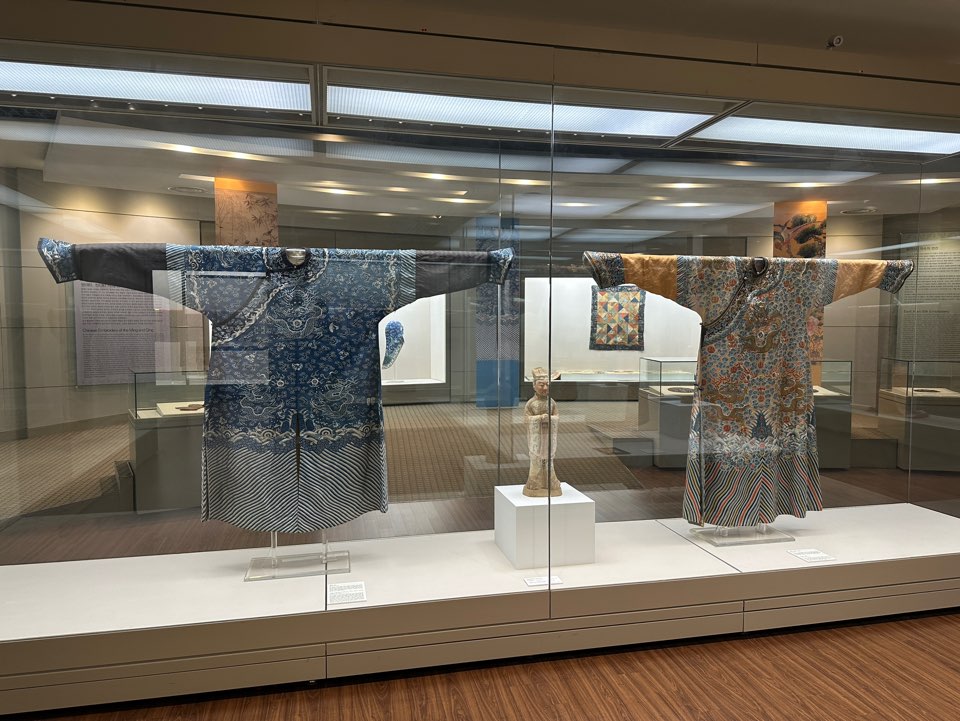
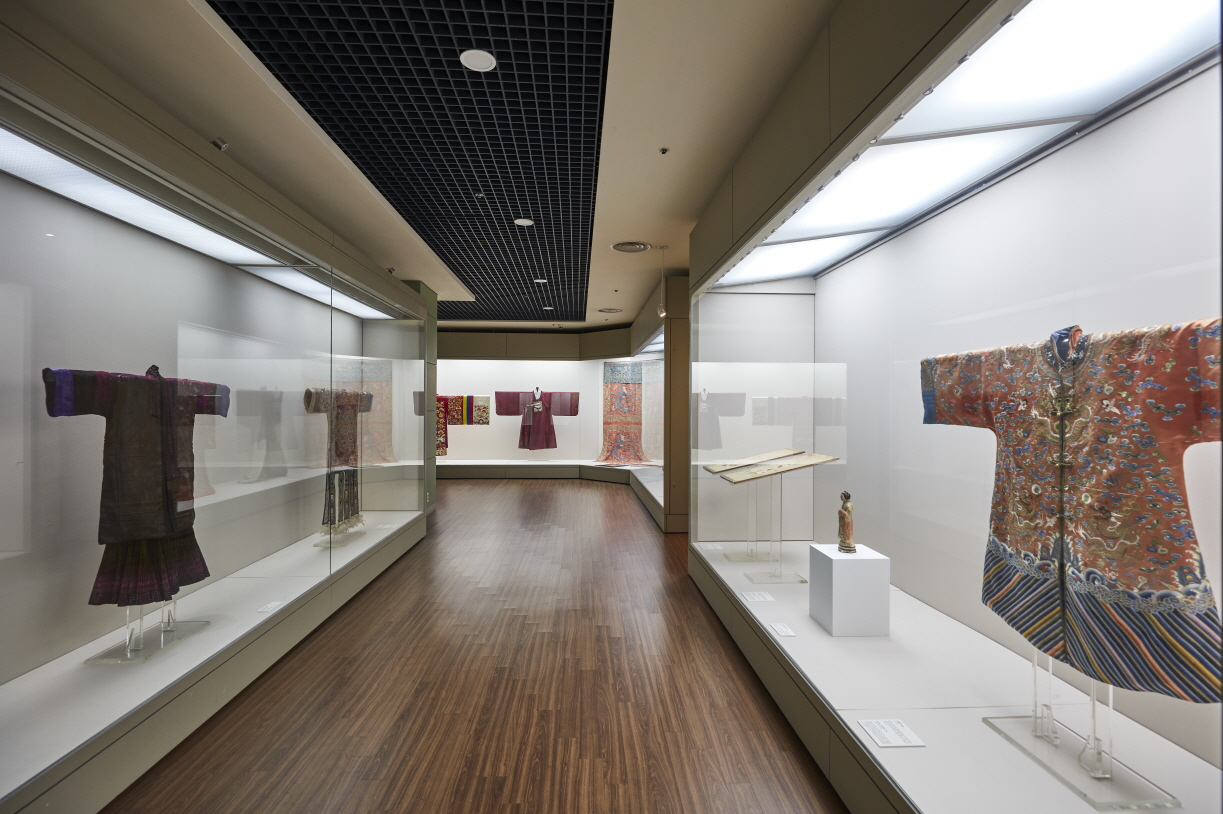
2025 University Museum Promotion & Support Project Special Exhibition
The Times of Fiber: Carrying Tradition and Connecting the Future
Ⅰ.Recording the History of Fiber Art
2025.5.8.-12.30 Chung Young Yang Embroidery Museum
Ⅱ.Connecting the Aesthetic Consciousness of Fiber Art
2025.5.8.-12.30 Sookmyung Womens University Museum
Ⅲ.Creating the Future through Up-cycling
2025.5.8.-8.14 MOONSHIN Museum
- Place
- CEM
- Period
- 2025. 5. 8. ~ 2025. 12. 30.
- 첨부파일
- 첨부파일이(가) 없습니다.